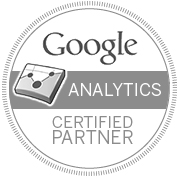CONTENT TAGGING
Track Content with Keyword Tagging
Using Content Tagging, you can track the performance of your content by keywords tagged. Highlight topics that boosts social activity and site traffic specific to your audience and replicate that success for future campaigns. Link content performance directly to your business goals by showing topic what content drives the most conversion by type, topic, objective or tone.
Learn How To Use Content Tagging
Content Tagging
Content Tagging is a method used to categorize digital content. You can organize your content by type (photo, image or link), keyword, campaign, objective or tone. There are many benefits to tagging your content including tracking performance of a keyword relative to site traffic and social activity. Also, you can notify search engines that your site contains relevant information for your tagged keyword.
Utilizing Content Tagging Enables You To:
- Link content keywords to conversion events and social platforms
- Determine which keywords drive the most conversions
- Determine which type of content is most effective
- Optimize your site and social strategy for search engines
- Measure Content ROI by keyword or campaign
LiftMetrix uses your content tags to fuel recommendations and guide your strategy according to content tags that perform best as viewed in your analytics dashboard. In minutes, you can transform your social data and analytics into actionable business intelligence. So, what are you waiting for?
Link Content Performance to Keyword Strategy With Content Tagging
Request A Demo
Webinar: Ultimate ROI
Guide to Social Media
Graham Gullans, Co-Founder of LiftMetrix, was recently featured during “Connect Via Hootsuite” alongside Ron Grant, Former COO of AOL. Watch their webinar, “The Ultimate Guide to Measure Social ROI” and learn how to view social media through a business lens. Your business will benefit from building a culture of data transparency and understanding how to use qualitative data to guide strategy.
DATA ACCESS AND INTEGRATIONS






